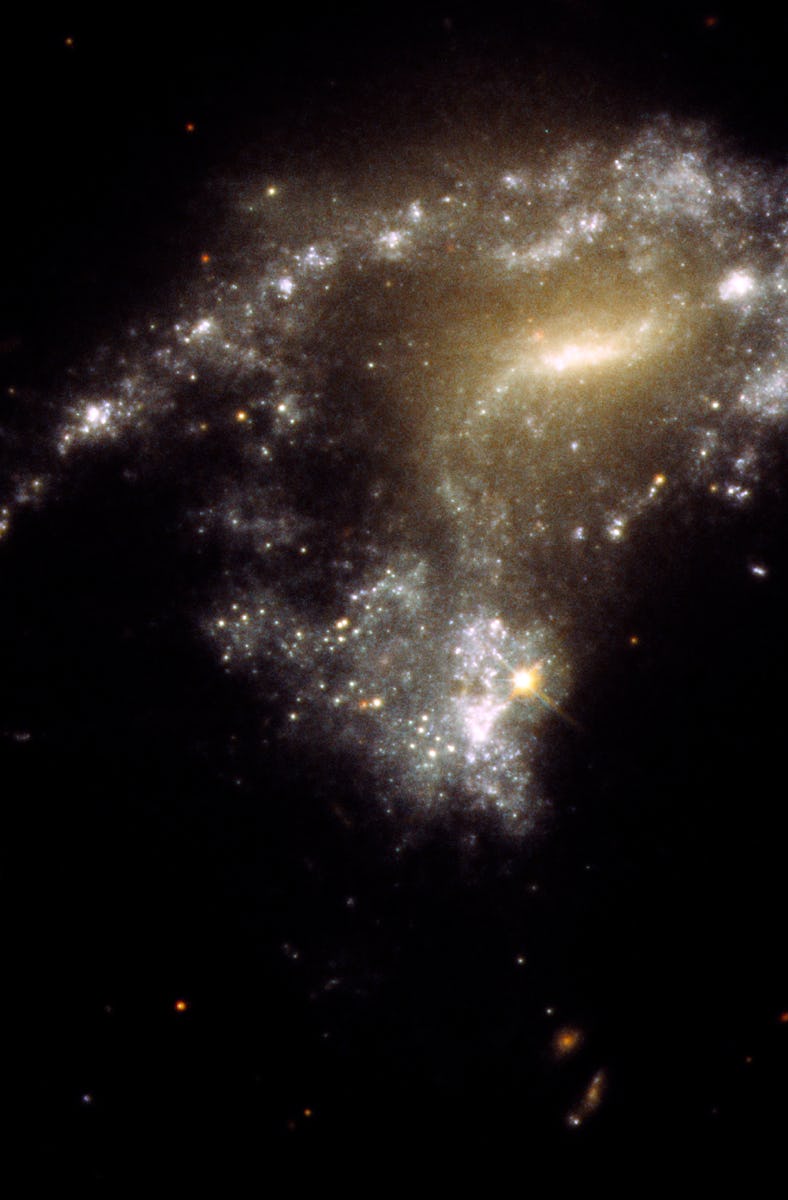Look! This Warped Galaxy Is Erupting With New Stars From Inside Its Tail
A new Hubble Space Telescope image from NASA showcases the beautiful distortion of a galaxy.

This image of Galaxy AM 1054-325 looks as if an elementary school kid in art class drew a curvy line with Elmer’s glue and then sprinkled glitter on top.
Once upon a time, the galaxy looked normal, like the pancake-shaped spirals that our minds first conjure when asked to picture a galaxy. But something happened here. It’s bent, and a smear of bright points shines at one end. The galaxy is both a literal and figurative question mark.
A new Hubble Space Telescope image showcases the beautiful distortion of this galaxy, located 173 million light-years from Earth in the constellation Antlia, experienced when it got close to another.
Galaxy AM 1054-325, as seen by the Hubble Space Telescope.
Of particular interest is its tidal tail, the pointed end where gas and dust have been pulled away from the main body, and where new pressures from the tugging galaxies create starbursts where they didn’t exist before.
“Contrary to what you might think, galaxy collisions do not destroy stars. In fact, the rough-and-tumble dynamics trigger new generations of stars, and presumably accompanying planets,” Hubble Space Telescope officials wrote in a description published alongside the new image on Thursday.
In a recent survey, astronomers directed Hubble to look at a dozen interacting galaxies that have tails. They found 425 clusters of new stars within these appendages. The data shows that the million or so stars living in each of those clusters are very young — only about 10 million years old. Our Sun is 450 times older than them.
This tells astronomers that tails make new stars very efficiently. Like with shelf-stable flour, molecular hydrogen in these galaxies was lying inert. But with enough heat, pressure, and the right recipe, this ingredient could easily turn into something exciting.
The “firestorm of star birth,” as NASA calls it, created many new stars and probably planets. They may remain tethered to the S-shaped galaxy, though at a distance from the main body. Or, they could go off and roam as intergalactic objects.
This article was originally published on